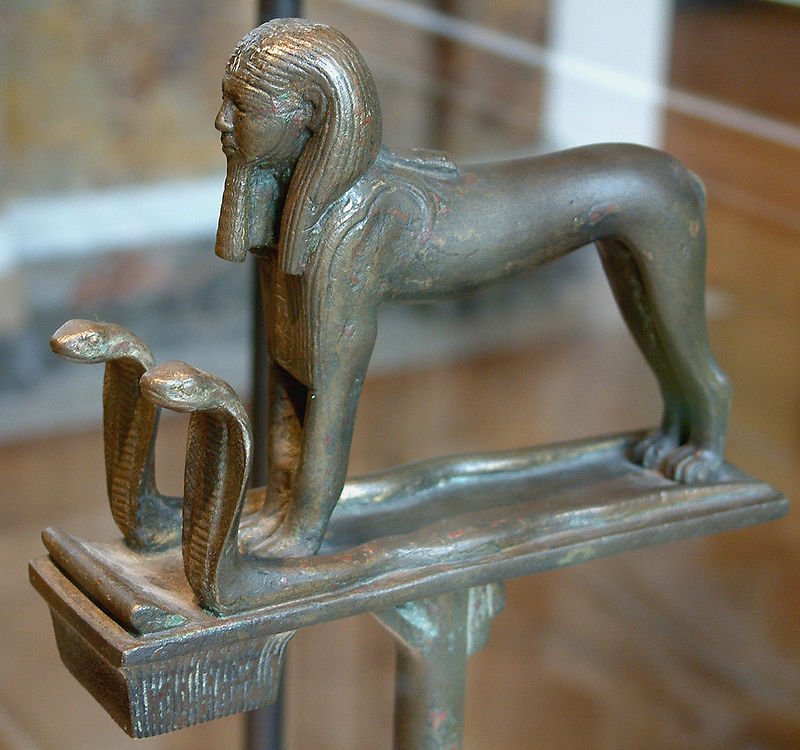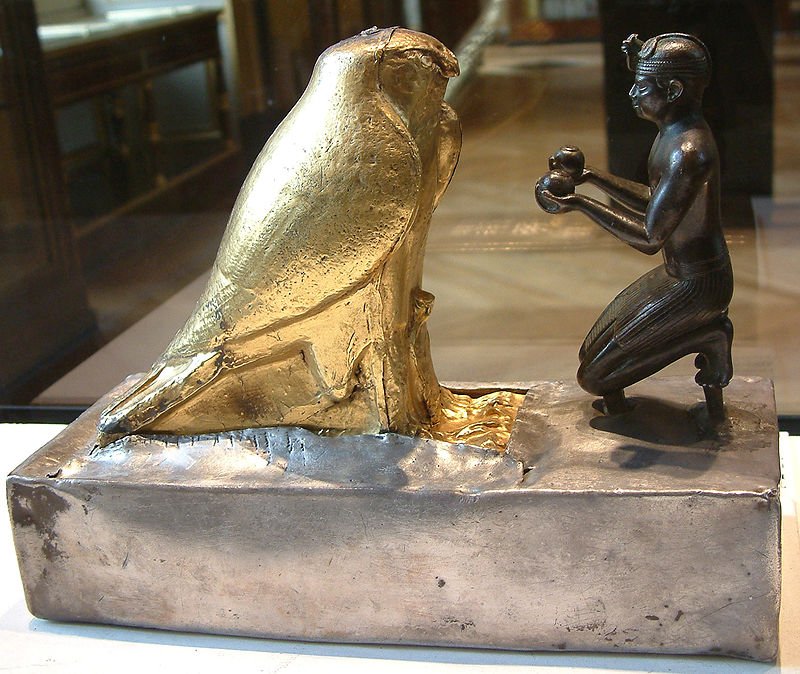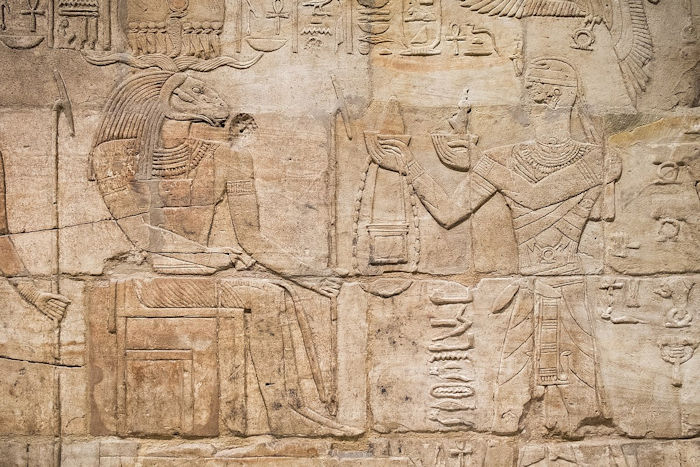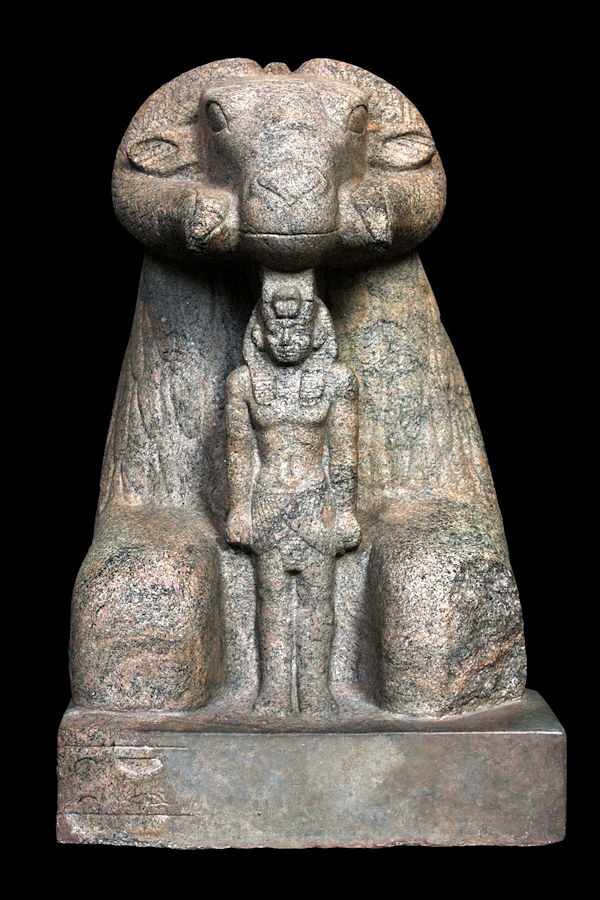Taharqa – The Most Powerful Of The Black Pharaohs
Ellen Lloyd - AncientPages.com - Ancient Egypt is often depicted as an autonomous, stand-alone realm that remained untouched and unaffected by its surrounding African cultures.
There is, however, historical evidence that the balance of power shifted, where the cultures of Egypt and the rest of Africa met and mingled, prompting a revival and reinterpretation of Egyptian customs, gods, and cultural modes of expression.
Taharqa as a sphinx. Credit: Wikipedia/Louvre Museum - CC BY-SA 3.0
For more than 2,000 years, Egypt was the stronger player in the balance of power between itself and its neighboring kingdom to the south, Nubia.
Taharka was the most powerful of the black pharaohs
Taharqa was the son of Piye and the cousin and successor of Shebitku. He was a pharaoh of the Ancient Egyptian 25th dynasty and king of the Kingdom of Kush in Northern Sudan. He reigned between 690 and 664 BC.
Taharqa, "The Black Pharaoh," focuses on a particular chapter in the history of Egypt: from around 750 BCE and in the century that followed, the Nubian rulers upset this balance, seizing the power of Egypt.
Taharqa - life and death of the pharaoh
When Shabaka conquered Lower Egypt and became Nubian king, he was accompanied by his nephew Taharqa, who was about age 20. Later, during Shabaka's reign as pharaoh, Egypt confronted the growing might of Assyria on the battlefield.
During this encounter, Taharqa was at the head of the Egyptian army. However, from a historical point of view, it remains unclear whether the two forces fought. Taharqa's brother Shabataka succeeded Shabaka, making Taharqa his coregent to ensure his succession. About 688 BC, approximately 23 years after the Nubian rule had been imposed over Egypt, Taharqa assumed the throne in his own right.
The next few years were peaceful. Taharqa wanted to control and know about significant events in the neighboring Asian countries. He, therefore, decided to move his capital to Tanis in the Delta.
Granite sphinx of Taharqa, 25th Dynasty, c. 690-664 BC. This statue from Kawa (Temple T) in Sudan shows the Pharaoh's face on a Lion figured sphinx, a form of royal representation borrowed from Middle and New Kingdom art. Credit: Narcissistic Nubian - CC BY-SA 4.0
By 671 BC. Egypt and Assyria again approached a confrontation, so Taharqa prepared to fight for the continued survival of Egypt. But the Assyrian king, Esarhaddon, crossed the Sinai Desert and defeated Taharqa's army on the frontier. In 2 weeks, he was besieging Memphis. The Egyptian military crumbled under the attack of the better-disciplined Assyrian army, armed with iron weapons.
Taharqa fled to Upper Egypt, leaving Esarhaddon to take control of Lower Egypt. Two years later, Taharqa returned with a fresh army and managed to recover possession of the Delta. Still, this success was short-lived, and Esar-haddon's successor, Ashurbanipal, drove Taharqa south again.
It was his final defeat, and he never again tried to campaign in the north. Egypt then entered into a long era of successive foreign rulers.
Taharqa was described by the Ancient Greek historian Strabo as having "Advanced as far as Europe" and (citing Megasthenes) even as far as the Pillars of Hercules in Spain.
Taharqa offers wine jars to Falcon-god Hemen. Image credit: Guillaume Blanchard. Credit: Credit: Wikipedia/Louvre Museum - CC BY-SA 3.0
In biblical depictions, he is the savior of the Hebrew people, as they are being besieged by Sennacherib (Isaiah 37:8-9, & 2 Kings 19:8-9).
Taharqa died in Thebes in 664 BC and was buried at Nuri - North Sudan. His successor was Tantamani, a son of Shabaka.
Evident archaeological traces of the Nubians in ancient Egypt
During his period of Egyptian rule, Taharqa encouraged many architectural projects. The same can be said about his Nubian predecessors. He erected monuments at Karnak, Thebes, and Tanis in Lower Egypt and built several prominent temples in Cush, Egypt's neighbor to the south. Cush played an important role in biblical history.
Pharaoh Taharqa and the gods of Thebes. Standing on the left, he offers "a white loaf" to his father Amun-Re, who is accompanied by Mut, Khonsu, and Montu, Kawa Temple. Credit: Anthony Huan - CC BY-SA 2.0
According to 2 Kings 19:9, "Tirhakah, King of Cush," came to the aid of Hezekiah against Sennacherib, king of Assyria, when his forces laid siege to Jerusalem in 701 BC.
Without such aid, it is hard to imagine that the Kingdom of Judah would have survived.
Taharqa's large temple in Kawa was built on the orders of Taharqa and dedicated to the sun and fertility god Amun-Re. It was intended to give help Taharqa in ruling over his vast kingdom.
It was abandoned in the 3rd century AD and lay buried in sand until excavations in 1930.
Taharqa's shrine is the largest intact Egyptian building in this country.
Archaeologists excavating in Egypt have discovered temples with Nubian inscriptions and highly sophisticated Nubian artifacts inside tombs and palaces. Many archaeological finds were excavated in Meroë and Kawa in present-day Sudan.
Granite statue of Amun in the form of a ram protecting King Taharqa, British Museum. Credit: Rama - CC BY-SA 2.0 fr
Archaeologists and historians have been working hard to preserve the ancient Nubian legacy.
The invading forces from the south appear almost more Egyptian than the Egyptians themselves. Pyramids are built, old traditions and gods are revived, and the new regime appropriates hieroglyphs and Egyptian iconography.
African roots of the Nubians are apparent in connection with their funerary customs and how their culture remained strongly influenced by Egypt even after they retreated to Nubia.
These fascinating findings show that Egyptian and African traits and cultures fuse.
Updated on March 06, 2023
Written by - Ellen Lloyd – AncientPages.com
Copyright © AncientPages.com All rights reserved. This material may not be published, broadcast, rewritten or redistributed in whole or part without the express written permission of AncientPages.com
Expand for referencesMore From Ancient Pages
-
 How Pre-Industrial Communities in Northeastern Europe Adapted to Climate Changes Over the Past Two Millennia
Archaeology | Feb 3, 2025
How Pre-Industrial Communities in Northeastern Europe Adapted to Climate Changes Over the Past Two Millennia
Archaeology | Feb 3, 2025 -
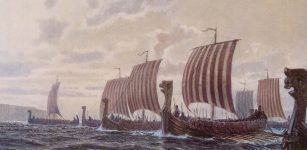 Huge Viking Winter Camp Unearthed In England
Archaeology | May 19, 2017
Huge Viking Winter Camp Unearthed In England
Archaeology | May 19, 2017 -
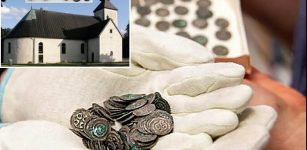 Trove Of Coins Dating Back To The 1100s Found On Visingsö, Sweden
Archaeology | Apr 8, 2024
Trove Of Coins Dating Back To The 1100s Found On Visingsö, Sweden
Archaeology | Apr 8, 2024 -
 DNA Reveals How The Vikings Changed Scandinavian Migration And Ancestry
Archaeology | Jan 5, 2023
DNA Reveals How The Vikings Changed Scandinavian Migration And Ancestry
Archaeology | Jan 5, 2023 -
 On This Day In History: Brazil Was Officially Discovered – On Jan 26, 1500
News | Jan 26, 2017
On This Day In History: Brazil Was Officially Discovered – On Jan 26, 1500
News | Jan 26, 2017 -
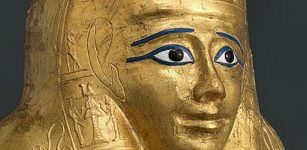 Gilded Coffin Of Nedjemankh, Priest Of Ram-God Heryshef Recovered By Egyptian Authorities
Archaeology | Mar 12, 2019
Gilded Coffin Of Nedjemankh, Priest Of Ram-God Heryshef Recovered By Egyptian Authorities
Archaeology | Mar 12, 2019 -
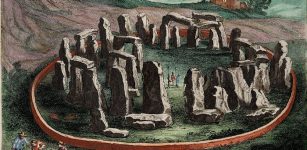 Hunter-Gatherers Used Open Habitats Millennia Before Stonehenge Monuments Were Built
Archaeology | Apr 27, 2022
Hunter-Gatherers Used Open Habitats Millennia Before Stonehenge Monuments Were Built
Archaeology | Apr 27, 2022 -
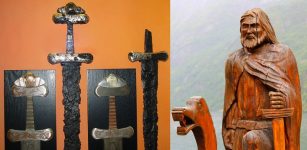 Were Viking Swords As Effective As They Were Impressive?
Ancient History Facts | May 9, 2018
Were Viking Swords As Effective As They Were Impressive?
Ancient History Facts | May 9, 2018 -
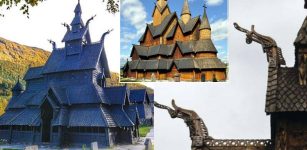 Unique Wooden Stave Churches Were Built Without Nails – Remarkable Technology Helped Them Survive
Featured Stories | Nov 15, 2022
Unique Wooden Stave Churches Were Built Without Nails – Remarkable Technology Helped Them Survive
Featured Stories | Nov 15, 2022 -
 Is ‘Someone’ Regularly Altering The Course Of History? – Is So How, Why And Who? Part 1
Ancient Mysteries | Nov 30, 2020
Is ‘Someone’ Regularly Altering The Course Of History? – Is So How, Why And Who? Part 1
Ancient Mysteries | Nov 30, 2020 -
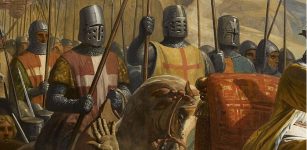 Norman Dominance Of Europe Inspired First Crusades In The Holy Land – New Book Claims
History | Sep 8, 2022
Norman Dominance Of Europe Inspired First Crusades In The Holy Land – New Book Claims
History | Sep 8, 2022 -
 New Evidence Vikings Failed To Wipe Out Communities And Anglo-Saxon Monasteries
Archaeology | Jan 30, 2023
New Evidence Vikings Failed To Wipe Out Communities And Anglo-Saxon Monasteries
Archaeology | Jan 30, 2023 -
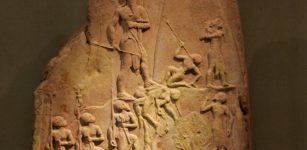 Did Climate Change End The Akkadian Empire?
Civilizations | Jul 17, 2019
Did Climate Change End The Akkadian Empire?
Civilizations | Jul 17, 2019 -
 Cursed Magical Dainsleif Sword Of King Hogni And Legendary Battle That Continues Until The Coming Of Ragnarok
Featured Stories | Jul 21, 2018
Cursed Magical Dainsleif Sword Of King Hogni And Legendary Battle That Continues Until The Coming Of Ragnarok
Featured Stories | Jul 21, 2018 -
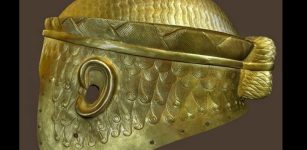 Helmet Of Meskalamdug – Sumerian King Of The First Dynasty Of Ur
Artifacts | Apr 14, 2016
Helmet Of Meskalamdug – Sumerian King Of The First Dynasty Of Ur
Artifacts | Apr 14, 2016 -
 Unsolved Archaeological Mystery Of Ta Prohm Temple, Cambodia
Civilizations | Sep 3, 2018
Unsolved Archaeological Mystery Of Ta Prohm Temple, Cambodia
Civilizations | Sep 3, 2018 -
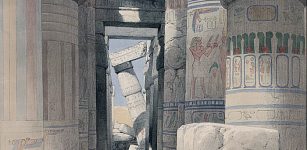 Karnak: One Of Largest Temple Complexes In The World And Its Spectacular View
Civilizations | Sep 5, 2015
Karnak: One Of Largest Temple Complexes In The World And Its Spectacular View
Civilizations | Sep 5, 2015 -
 Archaeological Discovery Of “Once-In-A-Lifetime” Medieval Gold Necklace In Britain
Archaeology | Dec 6, 2022
Archaeological Discovery Of “Once-In-A-Lifetime” Medieval Gold Necklace In Britain
Archaeology | Dec 6, 2022 -
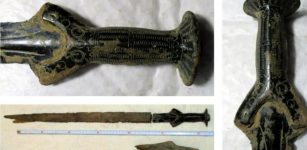 Rare 3,300-Year-Old Sword Accidentally Discovered In Jesenicko, Czech Republic
Archaeology | Nov 9, 2020
Rare 3,300-Year-Old Sword Accidentally Discovered In Jesenicko, Czech Republic
Archaeology | Nov 9, 2020 -
 Genghis Khan Has 16 Million Relatives – You Could Be One Of Them
Ancient History Facts | Feb 3, 2018
Genghis Khan Has 16 Million Relatives – You Could Be One Of Them
Ancient History Facts | Feb 3, 2018

